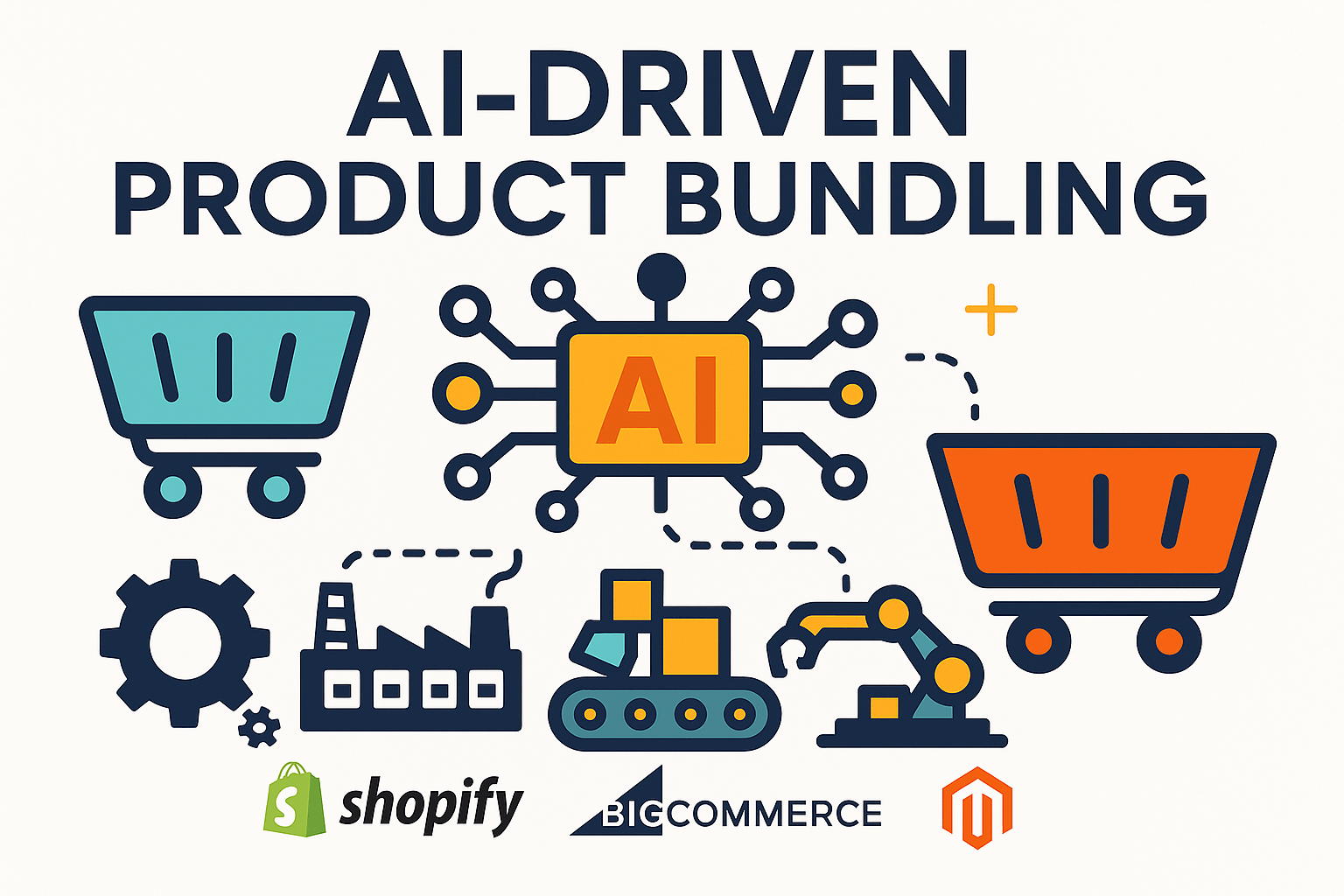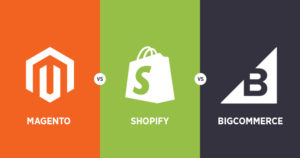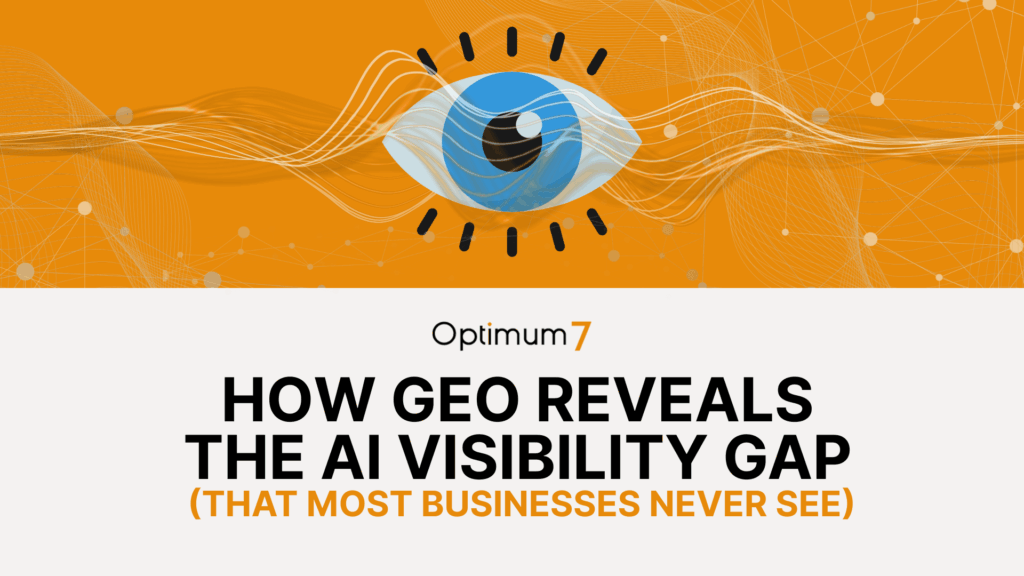The Bundling Blindspot in Industrial Ecommerce
Most revenue leaks in industrial ecommerce don’t happen where you’d expect. It’s not your ad budget, or it’s not your pricing strategy. It’s what buyers don’t see when they land on a product page. They come for a replacement valve or a specialty tool, find what they need, and check out. But sitting just outside their line of sight are the add-ons that would’ve made the job faster, safer, cleaner, maybe even prevented the next emergency. Those five overlooked products? That’s your real margin killer.
Your buyers aren’t skipping these add-ons because they don’t care. They’re skipping them because your system didn’t make them matter, or worse, offered irrelevant noise. This is the real blind spot in industrial bundling. While B2C brands have been fine-tuning smart recommendations for years, “frequently bought together,” “bundle and save,” “complete the look,” most industrial ecommerce still leans on outdated upsell blocks or generic cross-sell lists.
But when your buyers range from engineers to procurement teams to on-site techs, each with their own pressures and priorities, that one-size-fits-all model doesn’t just underperform. It silently fails. The outcome? Smaller orders. Incomplete carts. And your sales team is chasing down missed parts by phone and email, trying to patch over a system that never connected the dots.
But there’s another way forward, one that doesn’t just recommend more products, but recommends the right products based on actual usage patterns, job site realities, and customer roles.
This is where AI-driven bundling enters the conversation.
By analyzing historical order data, customer behavior, BOM patterns, and even job-to-be-done logic, an AI system can begin to identify not just what products go together, but why. And when. And for whom?
Suddenly, you’re no longer pushing accessories for the sake of margin. You’re solving problems your buyer hasn’t verbalized yet.
You’re not just selling parts, you’re anticipating needs. You’re helping them spec the installation kit before they realize they need one. You’re flagging that the sensor requires a different mounting bracket in a Class I Div 2 zone before they find out the hard way. You’re bundling for clarity, not clutter. Because in 2025, the fastest way to win the next order isn’t with a discount or a follow-up call, it’s by showing up with the full solution first.
The Buyer Behavior Problem: Why Customers Don’t Self-Bundle
If you assume that industrial buyers will add complementary products to their cart on their own, you’re designing for a fiction. In reality, they rarely do, because they’re not shopping, they’re solving.
An engineer searching for a temperature sensor isn’t browsing for an “order enhancement opportunity.” They’re sourcing a component to spec. Once they find a model that fits the voltage, material, and mounting requirements, they click, check out, and move on. That same engineer may not realize they need a DIN rail clip unless someone reminds them. Or that this sensor model ships without a mating connector. Or that the cable assembly required for Class II Div 2 compliance isn’t included.
Procurement teams are even more narrowly focused. Their job is to fulfill a request, hit a budget, and close the PO. They’re not going to scroll through accessories or interpret vague “Customers Also Bought” widgets. If the BOM doesn’t list it, it doesn’t get purchased. If the PDP doesn’t clearly say it’s required, it gets skipped. Their behavior is driven by risk mitigation and efficiency, not exploration.
And here’s the kicker: both buyers often believe they’ve completed the order correctly.
This is how returns happen. It’s how support tickets get created. It’s how expensive overnight shipping requests pile up because the job site doesn’t have the $12 part that makes the $1,200 industrial product functional.
The problem isn’t buyer incompetence. It’s interface blindness and logic breakdowns.
Most ecommerce platforms still treat bundling as a retail psychology tactic, not an industrial reliability strategy. So they lean on generic widgets: “You might like these,” “More from this brand,” “Complete your kit.” But without contextual intelligence, those suggestions either feel irrelevant or invisible. Worse, they can introduce confusion. If I see five cable options, I don’t assume which one fits; I believe I need to go back to engineering and ask.
That hesitation kills momentum. It delays orders. And it pushes buyers back into email and manual quote workflows, even when your platform is technically capable of ecommerce transactions.
Industrial buyers aren’t failing to self-bundle because they’re careless. They’re failing because the system never earned their trust. It didn’t show the right options at the right time. It didn’t adapt to their role. It didn’t make the next step obvious.
If you want to change that, you need a bundling engine that sees what they can’t. One that knows what comes next, based not on SKU adjacency, but on how real work actually happens in the field.
The Strategic Opportunity: Bundles That Solve Problems, Not Just Sell More SKUs
In B2C, bundling is often just a margin play, a gentle push to throw in another t-shirt or phone charger to bump up AOV. But industrial ecommerce doesn’t work like that. These buyers aren’t impulse shoppers; they’re managing compliance, uptime, safety, and ROI. If you approach them with the same “sell more” mindset, you won’t increase trust; you’ll break it. And confused buyers don’t convert. They hesitate. Or worse, they walk.
But if you shift your product bundling strategy from upsell tactics to problem-solving outcomes, you unlock something far more powerful.
Because industrial products rarely operate alone. A sensor needs a housing. A pump needs a controller. A compressed air system needs filters, regulators, and fittings. Yet in many ecommerce catalogs, these interdependencies are left to chance. They live in tribal knowledge, buried in spec sheets, or floating in the heads of senior sales reps.
AI-driven bundling changes that. It makes the invisible visible.
Rather than manually tagging compatible accessories or hoping a buyer reads the right footnote, a smart bundling engine starts with the outcome in mind. It asks: What is the buyer trying to accomplish? And what are the full system components required to make that happen reliably, safely, and to spec?
From there, it builds bundles that reflect real-world usage, not just catalog adjacency.
For example, if a customer selects a variable frequency drive, the AI system doesn’t just suggest mounting kits. It considers amperage, enclosure type, cooling requirements, and voltage compatibility to recommend the right circuit protection, conduit fittings, and heat sinks. The result isn’t a pile of accessories, it’s a field-ready system.
And here’s where the transformation really happens: this approach builds trust.
When a buyer sees a pre-bundled solution that accounts for edge cases, compliance logic, or installation quirks, it signals expertise. It says, “We know how this gets used. We’ve done this before.” That confidence accelerates purchasing decisions and deepens brand loyalty.
More importantly, it creates a differentiated customer experience. While your competitors are still listing individual parts with “related items” at the bottom of the page, you’re presenting complete solutions that feel engineered, not merchandised.
This strategy doesn’t just grow order values, it reduces friction. It makes your ecommerce site feel like a trusted spec partner, not just a digital storefront. And in industries where buyer confidence is everything, that’s the competitive edge most suppliers never even realize they’re missing.
Bundling, when done right, doesn’t just increase the size of the cart. It increases the speed, clarity, and accuracy of the decision behind it. It turns your catalog from a warehouse into a toolkit, and that’s when you stop selling parts and start selling outcomes.
Why Static Bundles Fall Short in the Industrial Online Store
It’s tempting to think the solution is simple. Just prebuild some kits. Create product bundles for your top five categories. Package the accessories together, offer a small discount, and watch the average order value rise. But in industrial ecommerce, static bundles are a band-aid, one that rarely fits and often backfires.
Because the reality is that industrial buyers don’t just want options. They need the right combination of multiple products, tailored to their environment, their spec, and their operational constraints. And no two use cases are exactly alike.
A static bundle might work for a simple tool set or a maintenance starter kit. But try pre-building a bundle for a pressure sensor, and you hit a wall. Do you include the high-temp housing or the standard one? The explosion-proof enclosure? The NPT or BSP threading? Do you bundle the 12V connector, the 24V, or the PoE option? And what if they’re mounting it in a vertical orientation, in a food-safe environment?
Prebuilt bundles can’t answer those questions. They assume uniformity in a market defined by variation.
Worse, static bundles often create more confusion than clarity. Buyers wonder, “Can I swap out this part?” “What if I don’t need the cable?” “Does this meet our compliance requirements?” That hesitation leads to one of two things: a call to sales or cart abandonment.
And then there’s the backend nightmare.
Static bundles bloat your SKU catalog, and they require manual maintenance. Every time a component is updated or discontinued, you have to audit every bundle it touches. They don’t inherit logic nor adapt. And they often duplicate complexity instead of solving it.
This is especially painful when you sell to both engineers and procurement.
The engineer might appreciate a complete system, but the buyer wants individual line items for approval workflows or ERP matching. Static bundles force you to pick one path, solution, or SKU, and both audiences suffer.
At best, static bundles offer a quick win for a narrow use case. At worst, they introduce risk, redundancy, and operational overhead.
That’s why smart suppliers are moving toward dynamic, AI-driven bundling engines are the systems that adapt to buyer inputs in real time. Systems that understand product relationships, usage conditions, and compatibility rules, so that what gets shown is not just “related,” but required.
Static bundling is a legacy retail tactic. It wasn’t built for the nuance of industrial sales. And the longer you rely on it, the more you limit your ability to scale with precision.
What AI-Driven Bundling Looks Like in Practice
AI-driven bundling isn’t about slapping “you might also like” onto a PDP. It’s about understanding intent, engineering logic, and real-world usage, and then using machine learning to translate that understanding into dynamic, situation-aware recommendations that adapt to the buyer’s context in real time.
Let’s ground this in an industrial scenario. Imagine a customer is shopping for an industrial-grade pump to support a high-viscosity fluid process at a chemical plant. The buyer, likely a plant engineer or maintenance lead, cares about pressure ratings, fluid compatibility, motor torque, flange configurations, and compliance requirements.
When they select a specific pump model, AI bundling doesn’t just throw out generic accessories. Instead, it recognizes the parameters of that model: inlet/outlet sizes, RPM range, chemical exposure, and duty cycle. Then it cross-references historical purchase data, engineering rule sets, and success patterns from similar environments to recommend a curated set of essential components.
The system might recommend a seal kit compatible with the fluid type, a VFD configured to the correct voltage, mounting brackets that meet seismic codes in their region, and inline filtration sized specifically for their flow rate. If the buyer changes one spec—say, they switch the material from stainless steel to Hastelloy, the recommendations instantly update. New seals. Different fasteners. Maybe a different power setup altogether.
That’s the power of AI bundling: every choice the buyer makes teaches the system what’s next. It’s not static—it evolves with the input.
And over time, the system gets smarter. It learns from buying patterns, error rates, returns, and even post-sale service requests. If a specific flange combo consistently results in returns due to misalignment, the system deprioritizes it. If buyers in the food processing vertical often pair pumps with specific sensors for washdown compliance, that bundle logic becomes predictive.
What makes this even more powerful is the ability to align recommendations with persona and intent.
A procurement officer visiting the site from an ERP punchout may see bundles presented with cost-saving language, warranty consolidation options, or installation service tie-ins. An engineer logged in with a technical role tag might see detailed compatibility notes, 3D part previews, and CAD file downloads.
This isn’t about AI for its own sake. It’s about giving the buyer what they need, before they even ask for it, and doing it in a way that reflects the expertise of your team and the intelligence of your infrastructure.
When it’s done right, AI bundling becomes more than a sales tactic. It becomes a specification partner, a built-in systems engineer that quietly ensures every order is complete, compliant, and field-ready.
It builds a system that runs with fewer errors, delivers quotes faster, and earns deeper trust, resulting in a clear lift in both average order value and customer satisfaction.
Building the Right Customer Data Foundation for Bundling Intelligence
AI can’t recommend what it doesn’t understand. And in industrial ecommerce, most of the raw intelligence needed for bundling already exists, but it’s trapped in PDFs, tribal knowledge, or buried in backend systems that were never built for ecommerce. Before you can deliver smart, AI-driven product bundles, you have to liberate and structure your data.
That begins with your product relationships. Most ERPs and PIMs store some level of association, “compatible with,” “often purchased with,” “required for use”, but rarely in a format ready for frontend intelligence. The first step is to extract and normalize these associations into structured logic. Which products depend on which specs? What options are mutually exclusive? Where do voltage, material, or flow parameters affect compatibility?
This is not just a basic IT task; it’s a cross-functional knowledge exercise. Your sales engineers, product managers, and support teams likely know more about bundling logic than your ecommerce platform ever will. What you need is a process to codify that logic, tie it to metadata, and make it accessible to your recommendation engine.
Next comes attribute enrichment. AI bundling relies on a deep understanding of each product’s traits, material, usage context, power type, NEMA rating, environment, lifecycle, and more. If your catalog lacks these fields, or if they’re inconsistently populated, the bundling engine can’t infer what goes together and why. Structured data means more than just specs. It includes customer segmentation, industry verticals, and even failure mode patterns.
This is where platforms like Shopify Plus and BigCommerce start to show their limits. Native product fields aren’t built to handle the complexity of industrial metadata. That’s where metafields, custom objects, and in many cases, middleware layers become essential. Your frontend bundling logic can only be as intelligent as the data it’s allowed to interpret.
Then comes the behavioral layer.
When you marry structured product relationships with buyer behavior, you unlock exponential bundling potential. AI doesn’t just need a catalog; it needs context. And the more feedback loops you build into your product ecosystem (e.g. clickstream tracking, quote abandonment logs, repeat purchase frequency), the smarter your bundles become over time.
Even your service and returns data play a role. What’s sent back most often? Which bundles result in fewer support tickets? This data helps your AI learn not just what to suggest, but what to avoid.
Without a strong data foundation, AI bundling is just guesswork in a fancier outfit. But with it, you turn every product page into a dynamic, insight-driven recommendation engine, one that mirrors the expertise of your best sales engineer, only at scale and without friction.
It’s not magic. It’s architecture. And it begins with giving your product ecosystem a brain.
Where to Build It — Platform Architecture and Ecommerce Features
Once your data is structured and your bundling logic is mapped, the next question is where this intelligence should actually live. And if you’re still shopping for the best ecommerce platform to support dynamic bundling at scale, it’s critical to look beyond just native features. Most popular ecommerce platforms weren’t built to handle bundling at this level of complexity, especially not in the industrial space.
Take Shopify Plus. It’s fast, flexible, and scalable, but it was designed for simplicity. You can use metafields and tags to build basic relationships, and with Shopify’s basic functionality or a headless setup, you can build conditional bundles. But the moment you need to reference multiple technical attributes across product types, or suggest configurations based on prior behavior, you’re working against the grain.
BigCommerce gives you more flexibility in terms of open APIs and custom logic. You can build decoupled frontends and use middleware to inject bundling intelligence. But again, there’s no native bundling brain. You’ll need to architect one, either in a dedicated microservice or via a personalization engine that connects to your PIM, ERP, and frontend.
Magento (or Adobe Commerce) as a leading open source ecommerce platform, offers deeper catalog logic and customizable bundling options out of the box. But the tradeoff is complexity and maintenance. For teams without strong internal dev resources, building and maintaining AI-enhanced bundles in Magento often becomes a never-ending sprint.
So, where should you build it?
The answer: above the platform.
Instead of forcing your bundling logic into a CMS, build it as an independent intelligence layer. A standalone recommendation engine, powered by AI, trained on product metadata and customer behavior, connected via APIs to your ecommerce frontend, ERP, and PIM.
This layer can:
- Pull in product specs, compatibility rules, and usage context from your PIM
- Analyze real-time behavior from your site and CRM
- Generate personalized bundle suggestions per user or user role
- Serve those bundles into the frontend through a dynamic component
- Push valid bundles back to the ERP or CPQ system as line items or BOMs
In headless environments, this becomes even easier. Your storefront is just a presentation layer. You can render bundles based on persona, cart contents, or even quote status, without being limited by what Shopify, BigCommerce, or Magento natively allow.
Think of it like this: your ecommerce platform is your foundation. But your bundling engine is the architect. It knows what rooms go together, how buyers move through the space, and what additions turn a house into a custom-built factory.
This isn’t theoretical. We’ve implemented this architecture for industrial brands selling everything from filtration systems to assembly robots. And every time we decouple bundling from the CMS and connect it to real data logic, conversions rise, support tickets fall, and the sales cycle shortens.
So don’t pick your platform based on its bundling features. Build the bundling system you need, and plug it into the platform you’ve got.
That’s the future of intelligent selling in industrial ecommerce.
The Payoff for Your Ecommerce Business: Higher AOV, Faster Decisions, and Less Friction
When AI-powered bundling works right, it stops being a feature and becomes a flywheel. What begins as a recommendation engine quickly evolves into a revenue multiplier, a trust builder, and an operational pressure release. The benefits compound—because the better your bundles perform, the more data they generate, and the smarter your system becomes.
Let’s start with average order value (AOV). Most industrial ecommerce teams focus on core product sales, but overlook the ecosystem around them—mounting hardware, replacement kits, safety components, lubricants, or industry-specific accessories. With intelligent bundling, these aren’t afterthoughts—they’re woven into the customer journey. Not as pop-ups or upsells, but as mission-critical inclusions that reduce effort and risk.
We’ve seen AOVs jump by 15% to 40% in product lines where bundling was previously handled manually, or not at all. And it’s not just about volume. These orders are higher quality too. Fewer errors, more completed configurations, and less back-and-forth with support because buyers get everything they need the first time.
Then comes decision velocity. When an engineer sees a complete, spec-correct bundle tailored to their application, their confidence spikes. They don’t need to chase PDFs, email reps, or guess whether Product A works with Product B. That confidence translates into speed: quotes get approved faster, carts convert quicker, and purchasing teams have fewer internal hurdles to clear.
Even your support and sales teams feel the lift. With bundling logic doing the heavy lifting, reps can spend less time firefighting and more time selling. Instead of correcting invalid orders or fielding “what else do I need?” calls, they can focus on strategic accounts, upsells, and onboarding.
The operational impact might be the most underestimated benefit of all. By reducing the volume of rework, missed parts, and unnecessary returns, AI bundling shrinks the margin-killing chaos that eats at logistics, fulfillment, and finance. When every line item is valid, every BOM aligns, and every shipment includes what’s truly needed, your entire post-checkout process tightens up. That’s the margin you keep.
And because the bundling engine is learning from every success and failure, every completed order, abandoned quote, and customer interaction, it gets smarter with each cycle. This is not a static rules engine. It’s a self-optimizing commerce brain that keeps your catalog moving in sync with customer needs.
You’ll know it’s working when:
- Your AOV climbs, not because you pushed harder, but because buyers found more of what they needed
- Your sales cycle shrinks because the quote arrives already aligned with specs, compliance, and intent
- Your operations team thanks you, because the errors that used to clog the system start to disappear
That’s the real ROI of AI bundling. It’s not a gimmick. It’s a systems upgrade for your entire ecommerce store and business, from the product page to fulfillment.
The Industrial AI Bundling Blueprint
Smart bundling isn’t just about recommending more, it’s about recommending better. And better only happens when your data, buyer logic, and platform architecture are working in sync. The following toolkit is designed to help you audit your current ecommerce setup, identify bundling blindspots, and lay the groundwork for a dynamic AI-powered bundling engine that doesn’t just increase AOV, it prevents the margin-killing chaos that happens when buyers don’t know what they need until it’s too late. This is your blueprint to stop leaving revenue on the table and start serving complete solutions with clarity, speed, and confidence.
Bundle Opportunity Scorecard
Use this scorecard to evaluate your current ecommerce setup’s bundling performance across key dimensions. Score each item 1–5 (1 = poor, 5 = excellent).
| Category | Score (1–5) | Notes / Gaps |
| Are complementary products displayed contextually per SKU? | ||
| Do your PDPs include accessory visibility by spec or role? | ||
| Is bundling logic dynamic (adjusts by input, use case, persona)? | ||
| Do bundles improve quote accuracy or reduce post-sale support? | ||
| Are recommendations based on historical buying data or static rules? | ||
| Can engineers vs. buyers see different bundle formats (e.g. spec-based vs. price-based)? | ||
| Is bundling managed through a central system (not hard-coded in CMS)? | ||
| Can your current ecommerce platform support real-time bundling logic? |
Total Score: ______ / 40
If your score is under 25, your current system is likely missing key bundling capabilities.
Static vs. Dynamic Bundling Checklist
This helps you identify which type of bundling logic your current system is using—and what needs to evolve.
☐ Bundles are prebuilt manually for popular SKUs
☐ Bundles are hardcoded in CMS or ERP
☐ Bundles do not update when user changes variant/spec
☐ Bundles don’t adapt by buyer role (e.g. procurement vs. engineer)
☐ Bundles rely on tags like “related products” or “frequently bought together”
If you’ve checked 3 or more of these, you’re using static bundling and limiting performance.
Next-Generation Bundling Should:
☐ Respond in real-time to SKU, variant, material, voltage, or spec changes
☐ Reflect BOM intelligence, not just SKU adjacency
☐ Pull from historical data, compliance rules, and use case logic
☐ Present bundles differently based on buyer persona or role
☐ Auto-update when component SKUs change in your catalog or ERP
Data Requirements Table: What You Need for AI Bundling to Work
| Data Type | Must-Have Attributes | Source System(s) |
| Product Metadata | Voltage, mounting type, material, IP/NEMA, ratings, certifications | PIM / ERP / Custom Sheets |
| Product Relationships | “Required for use,” “compatible with,” “optional” | ERP / Sales Engineering |
| Behavioral Data | Purchase history, quote abandonments, and return reasons | Shopify/BigCommerce logs, CRM |
| Buyer Segmentation | Role (engineer, buyer), industry vertical, repeat buyer flags | CRM / Account Tags |
| Performance Signals | Bundles with highest AOV / lowest return rate | Order history, RMA data |
Pro Tip: If even 20% of this data is missing or unstructured, AI bundling will underperform. Start by enriching your catalog, even manually, to build the initial logic set.
AI Bundling Readiness Checklist
Complete this checklist to determine if your store is technically ready to implement dynamic AI-driven bundling.
☐ We have metafields (Shopify) or custom fields (BigCommerce/Magento) for technical attributes
☐ We can tag customers by role (e.g. engineer, buyer, field tech)
☐ We track quote or cart abandonments
☐ We track SKU-level purchase patterns over time
☐ Our PIM or ERP contains compatibility data between products
☐ We can inject bundle recommendations via dynamic frontend components
☐ We can map bundles back to ERP or CPQ for quoting/PDF exports
If fewer than 5 are checked, you’ll need middleware to bridge ecommerce + intelligence.
Architecture Planning Table: Where Your Bundling Logic Should Live
| Layer | Recommended Action | Why It Matters |
| CMS / Storefront (Shopify, BC, Magento) | Avoid housing bundling logic here | Too rigid. Not built for role-aware, variant-aware logic |
| Middleware (Headless / API Layer) | Ideal place for AI bundle engine | Flexibility, cross-platform integration, real-time adaptability |
| ERP / PIM | Feed product specs + logic to bundling engine | Ensures data integrity and sync with fulfillment |
| AI / ML Engine | Use to detect patterns, preferences, and optimize bundles | Continuously improves AOV and accuracy |
Persona-Aware Bundle Delivery Map
| Buyer Persona | Needs | Recommended Bundle Format |
| Engineer | Technical validation, compatibility, CADs | Spec-based bundles + config toggles |
| Procurement | Accuracy, cost, delivery lead time | Line-item breakout with warranties |
| Field Tech | Simplicity, installation clarity | “Complete install kit” format with images |
| Project Manager | Full BOM, lifecycle planning | Multi-stage system bundles with options |
Use conditional logic (Shopify Hydrogen, custom frontend) to dynamically display bundles tailored to these personas.
Let Us Build Your Bundling Brain
Bundling isn’t just an upsell strategy; it’s industrial intelligence, operationalized. And if you’re still doing it manually, or worse, relying on generic product tags and static rules inside your ecommerce platform, you’re leaving serious revenue, efficiency, and customer trust on the table.
Because here’s the reality: your buyers don’t think in SKUs. They think in systems, specs, workflows, and use cases. They’re not just shopping, they’re trying to solve a problem. And if your site can’t anticipate that need and respond with precision, they’re one click away from a competitor who can.
The good news? You don’t have to rip out your current platform to make bundling smart.
Whether you’re on Shopify Plus, BigCommerce, Magento, or a custom headless stack, we can architect a bundling layer that sits on top of your current infrastructure, transforming your online business into a truly intelligent ecommerce solution.
We’ve done it for manufacturers of hydraulic systems, electrical components, filtration systems, and factory automation products. Each time, the system paid for itself in weeks. Because when buyers get what they need faster, more confidently, and with less risk, you win.
Contact us and let’s build your bundling brain.
It’s time to stop hoping buyers connect the dots and start helping them do it automatically.











